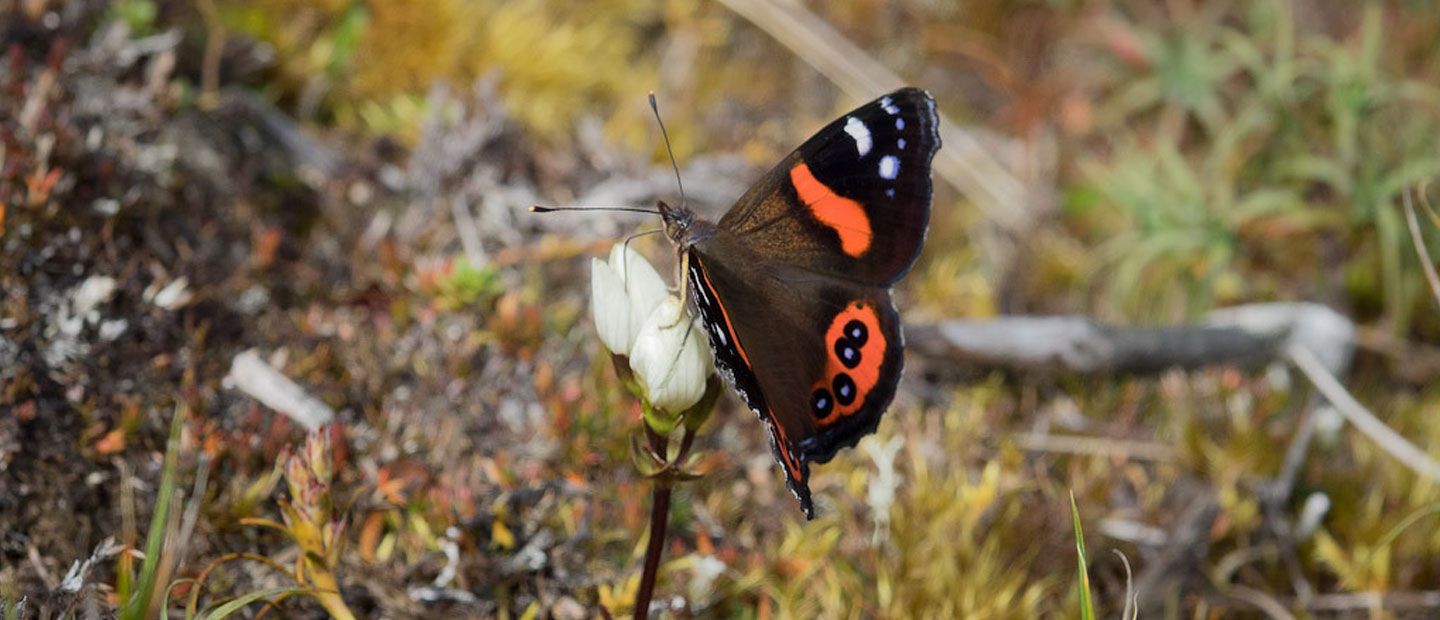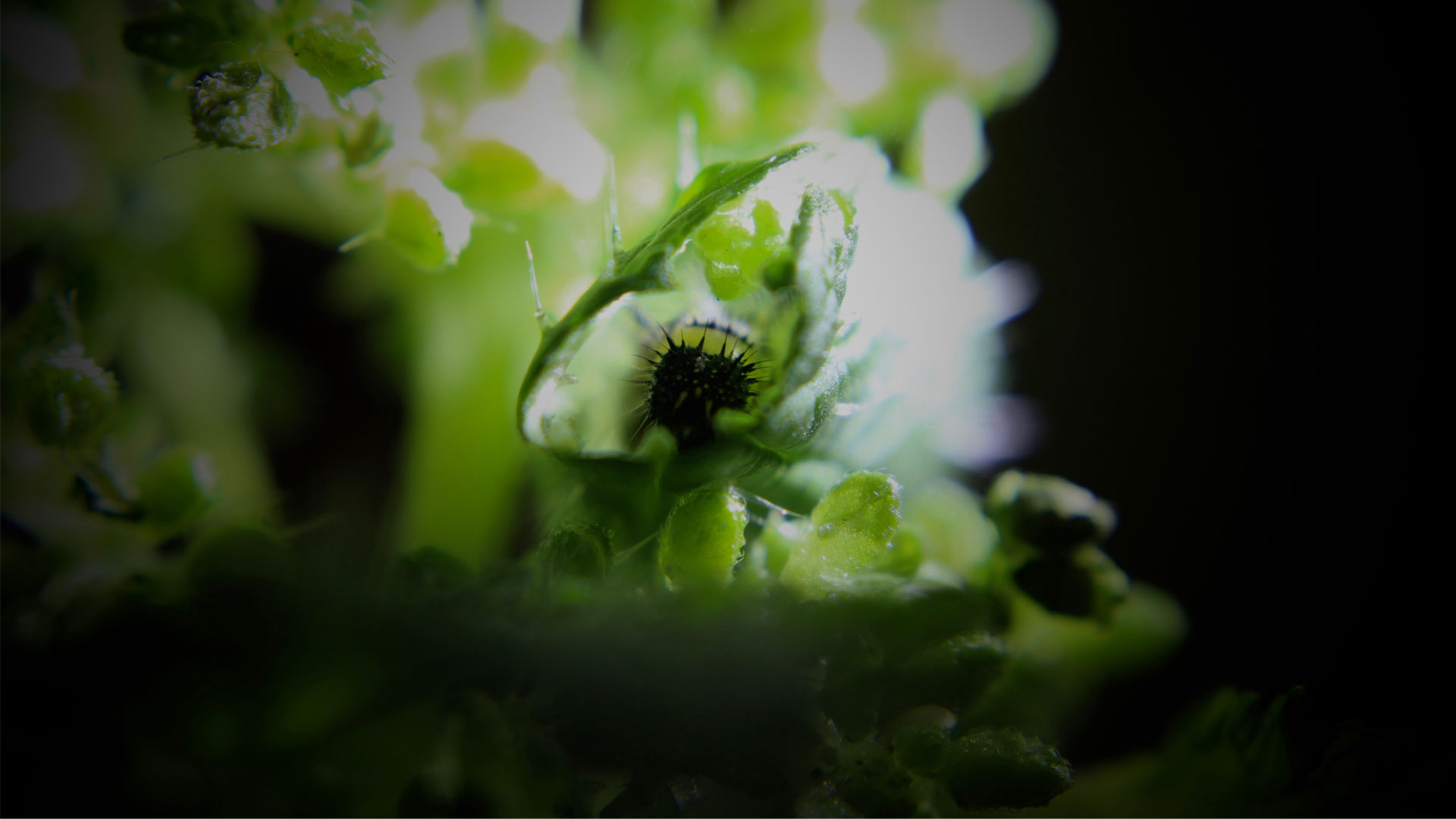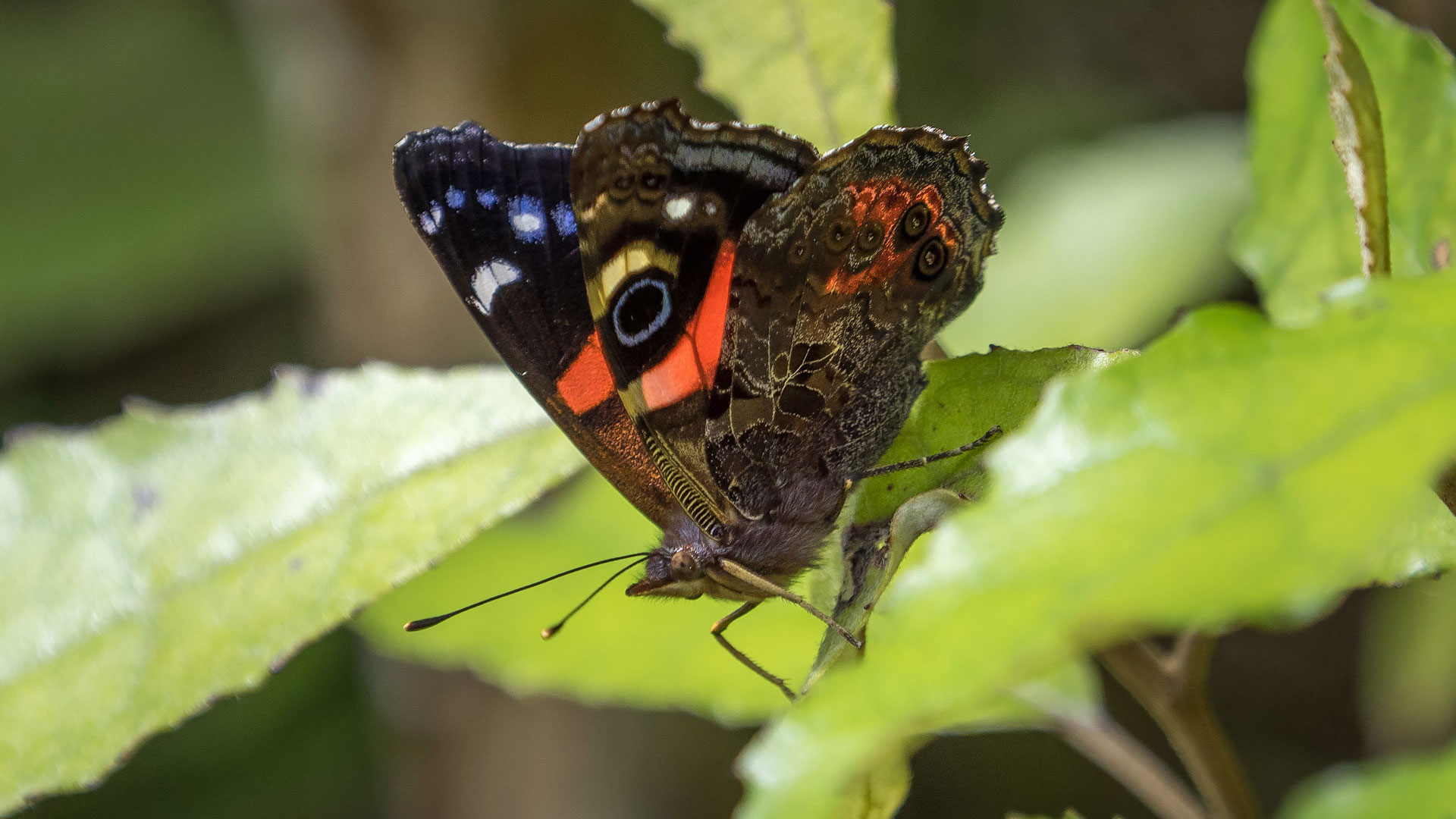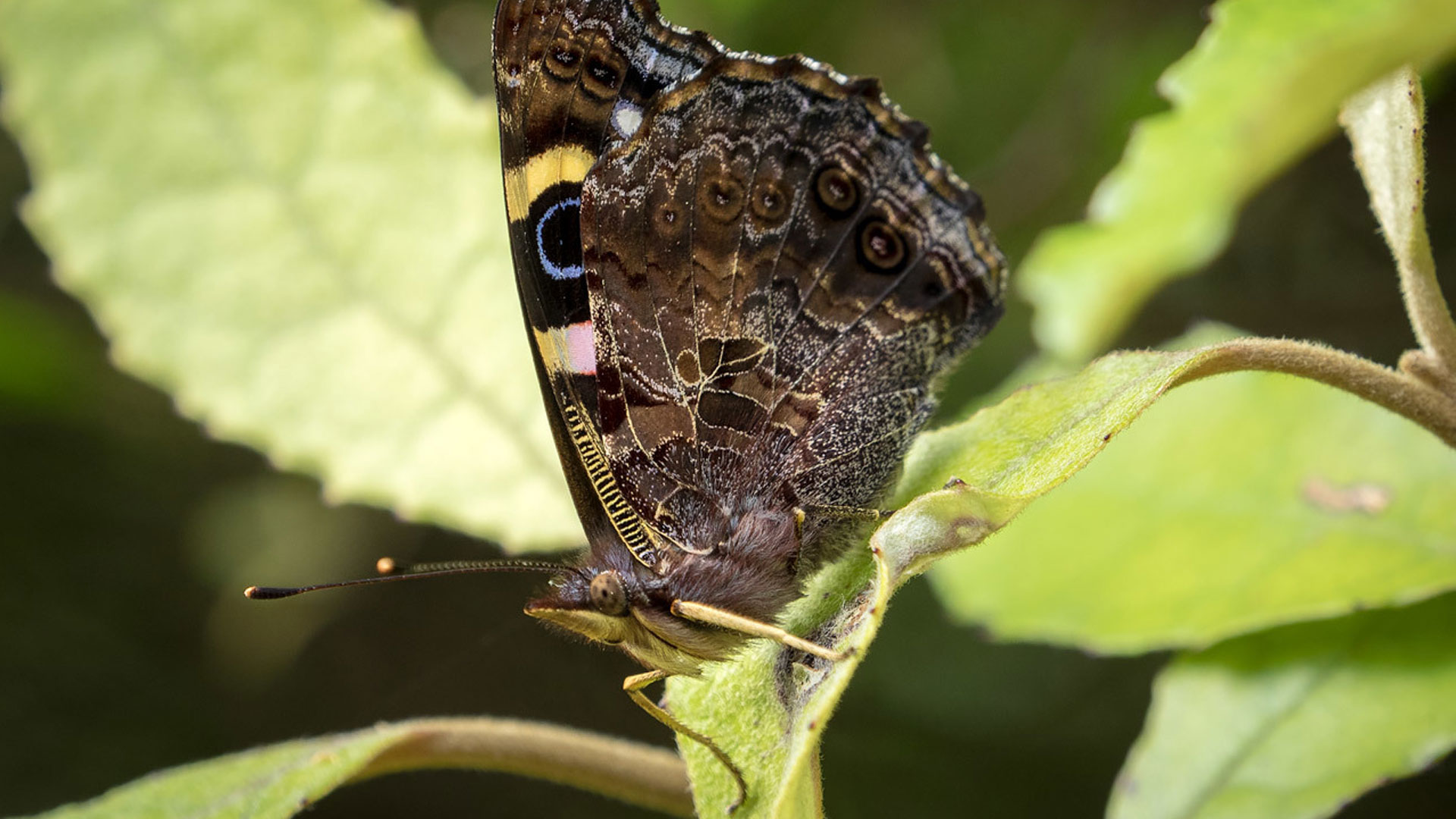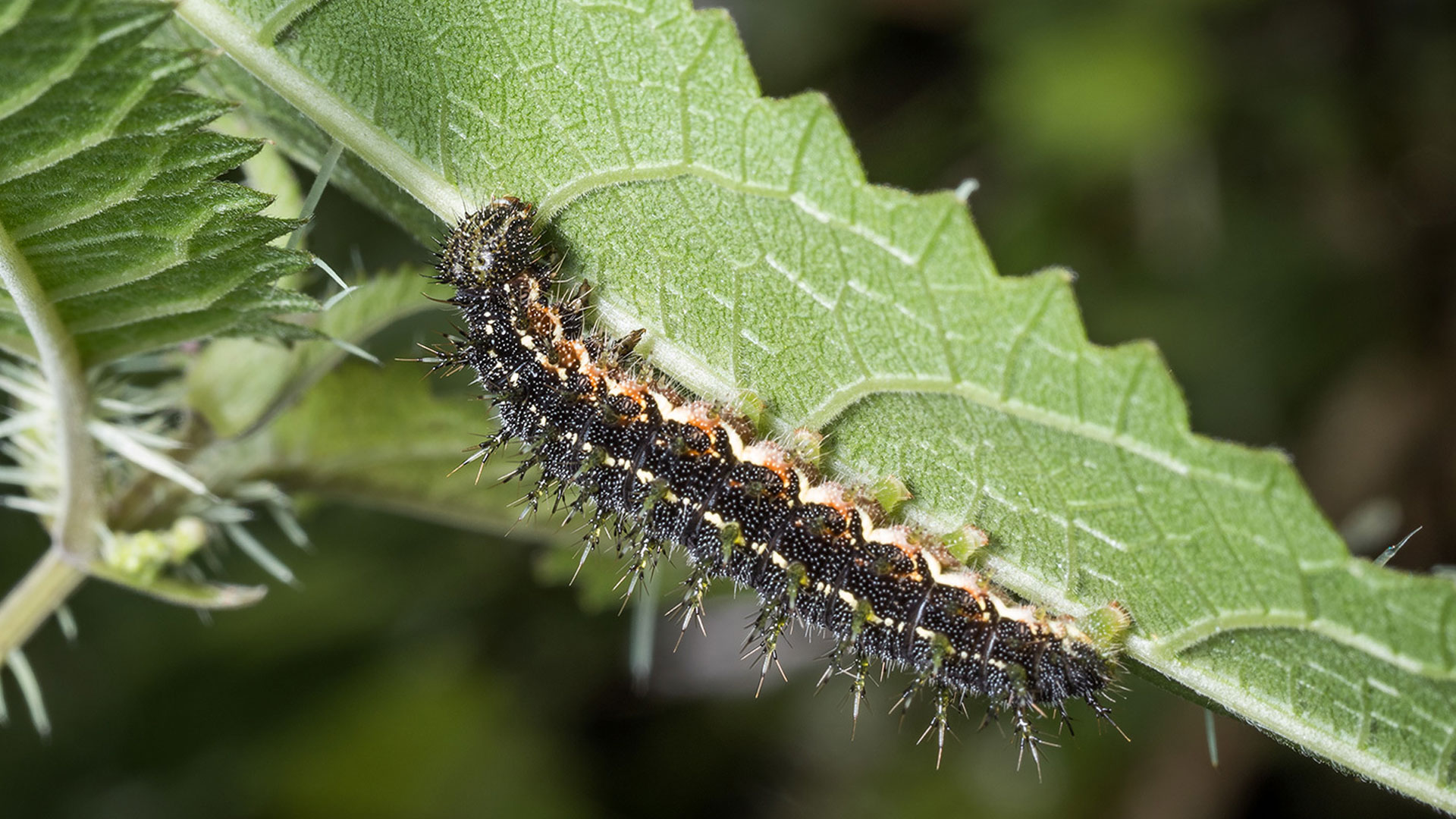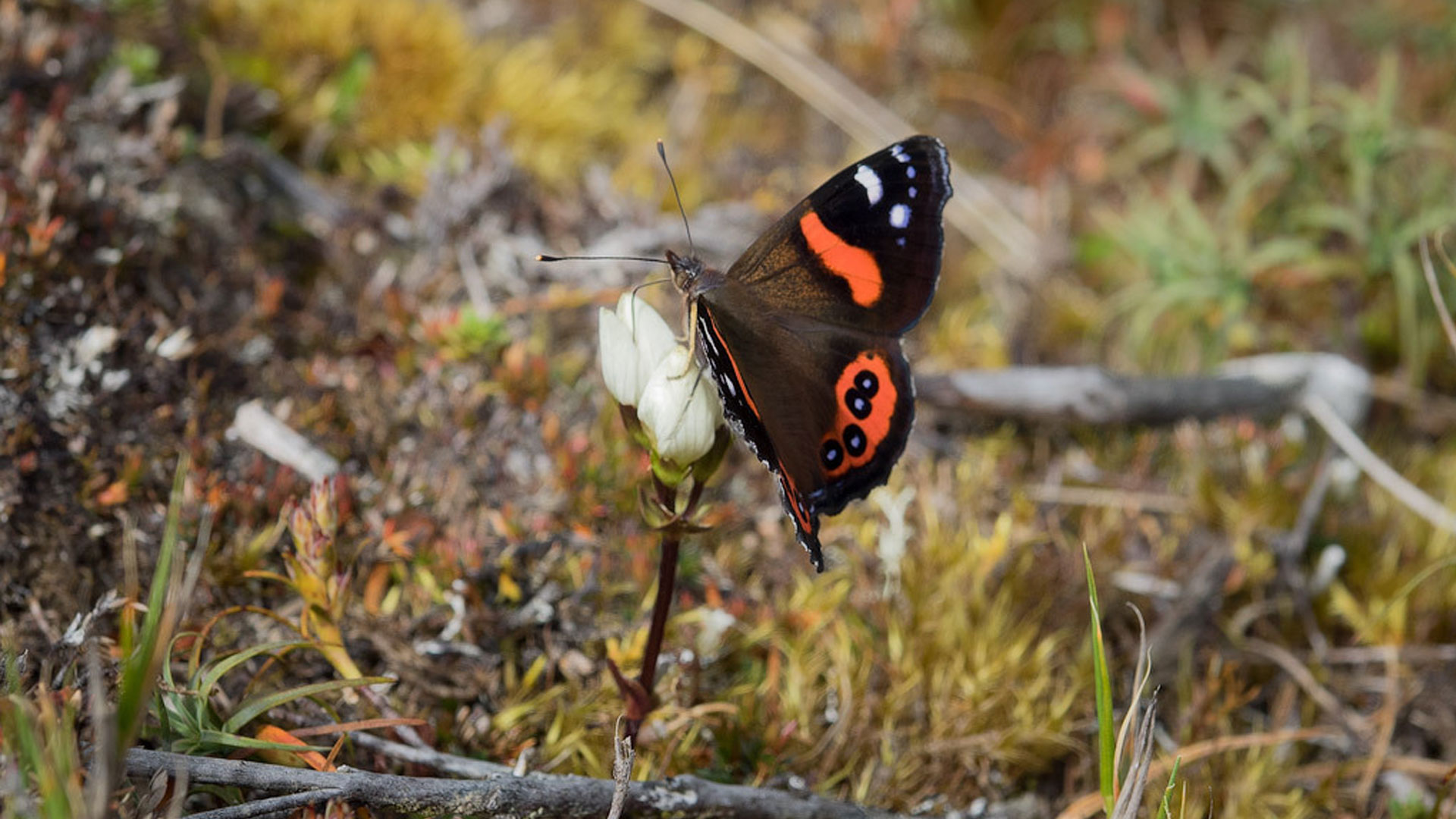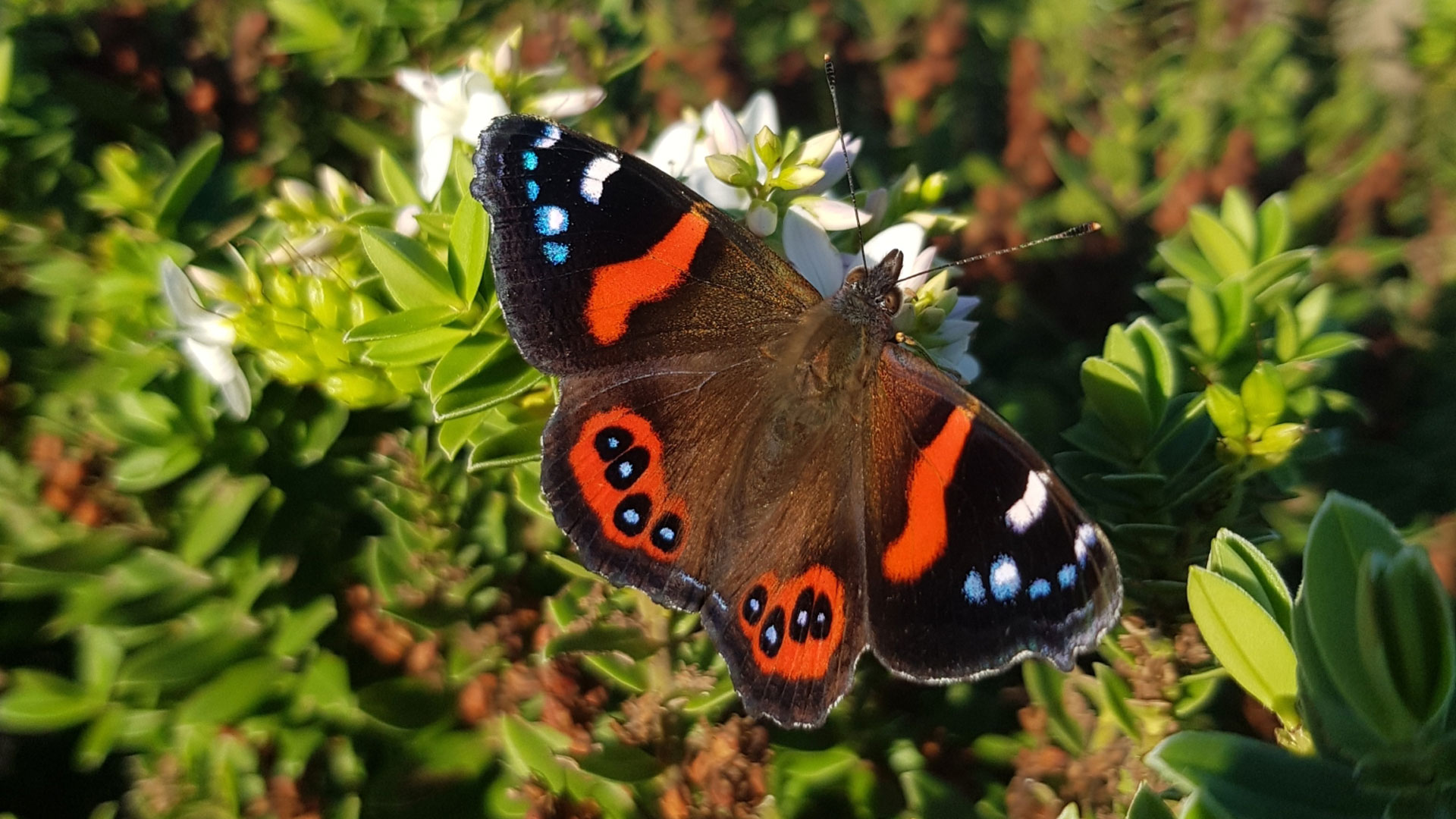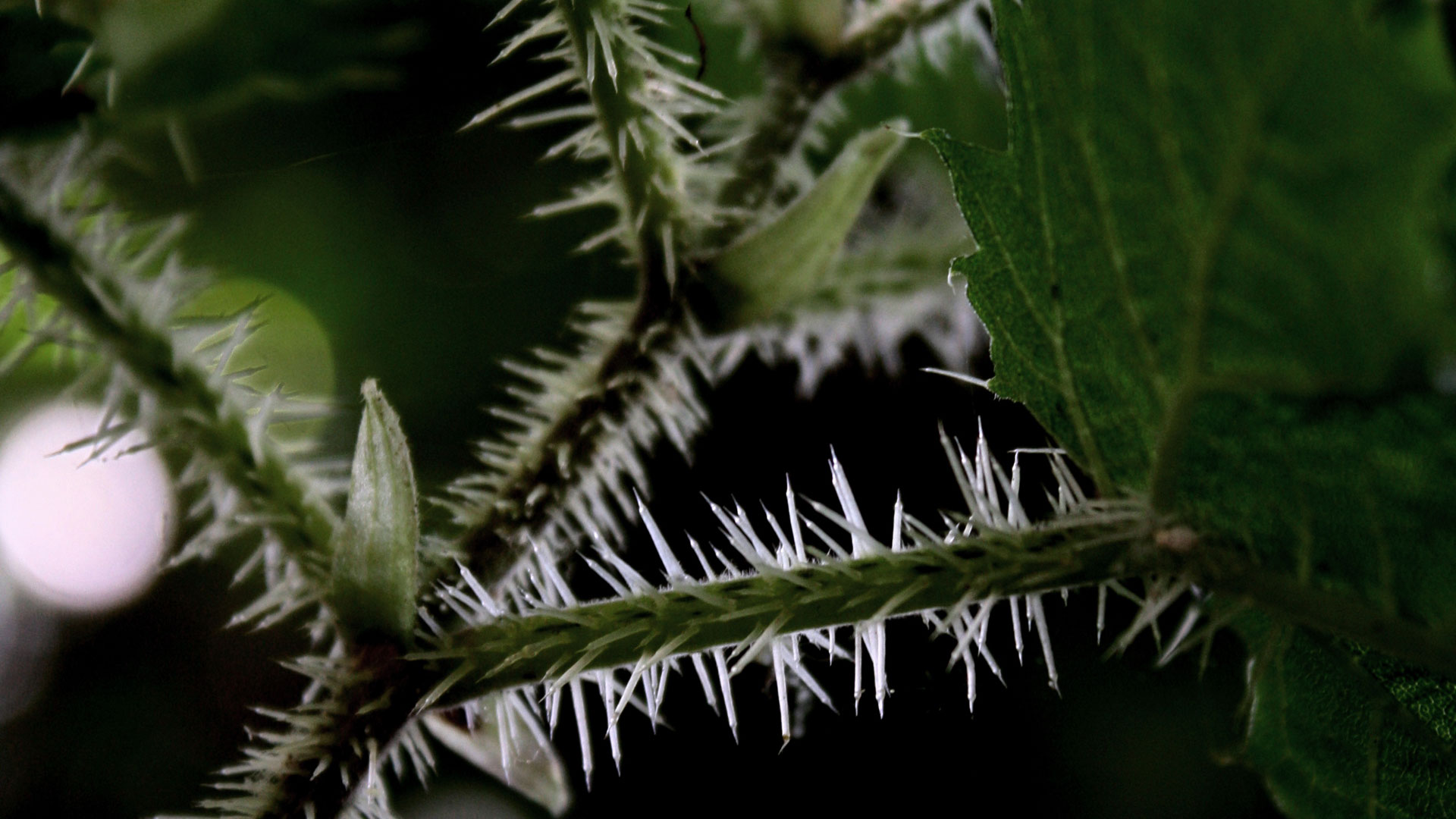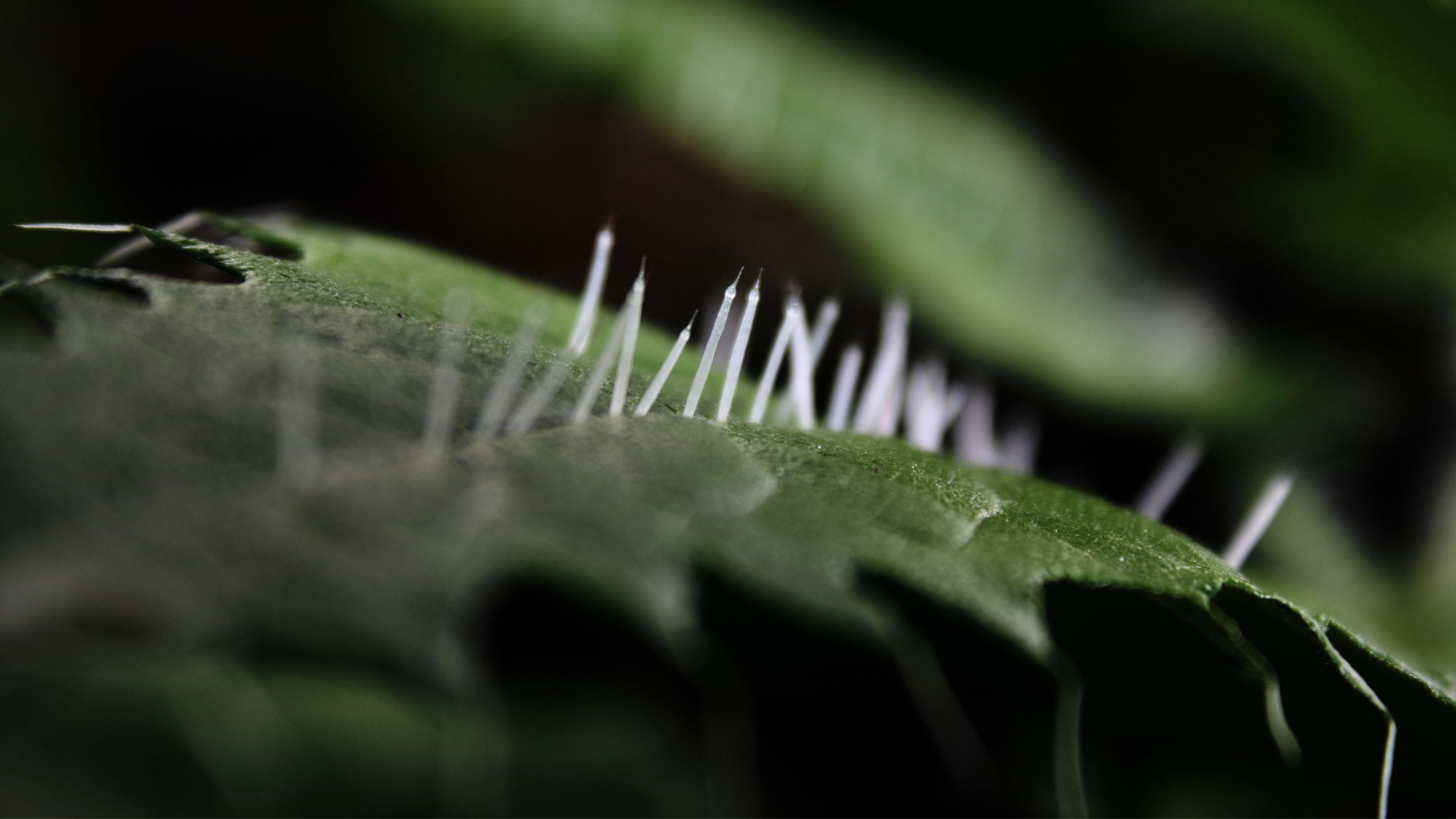The largest of New Zealand’s endemic nettles, Urtica ferox or ongaonga, is a woody shrub that can grow up to 5 metres in height. The stalks, leaves and flowers of this plant come equipped with stiff stinging hairs (trichomes) that if brushed against, can cause pain, rashes and even neurological damage in humans and other animal species. Within the safety of this nettle bush, red admiral larvae find the perfect home to grow up, with plentiful food and protective cover from predators.
Eggs are laid singly on a nettle leaf and hatch in a little over a week. The caterpillars are generally dark in colour, with lighter stripes running the length of the body and speckled with elaborate, spine like projections. They live within the foliage of the host plant – rolling or folding the leaf on which they are currently feeding into a tube or tent like structure, which is then secured with silk to form a protective (and edible) shelter. Once the leaf is consumed the caterpillar moves onto another and the process is repeated. After a month or two the larva is ready to pupate into a brown or grey coloured, gold-speckled chrysalis. Depending on the time of the year the butterfly may emerge in as little as two weeks – at which point, the life cycle is repeated.
Most kiwis who have tried growing brassicas (broccoli, cabbage, sprouts etc) in their home garden will be familiar with the cabbage white butterfly Pieris rapae, an agricultural pest species that was accidentally introduced here in 1930. To control the spread of the white butterfly in New Zealand, a parasitic wasp Pteromalus puparum was deliberately introduced in the 1930’s. Unfortunately this wasp also attacks New Zealand’s indigenous butterflies – including the red admiral.


